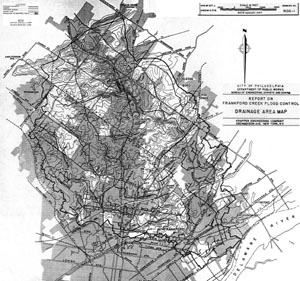in the context of
Citywide Sewer and Sewage Treatment Developments
By
Adam Levine, Historical Consultant
under a contract with
Philadelphia Water Department/Office of Watersheds
June 2002
[Revised March 2003]

The Tacony-Frankford Watershed
Click image for larger version (1,667 Kb)
